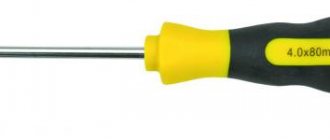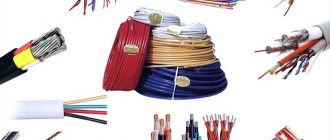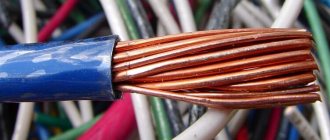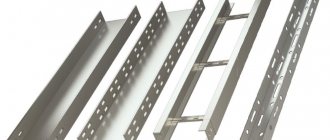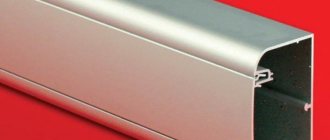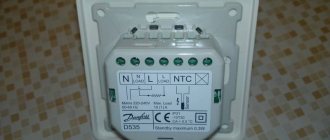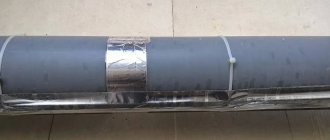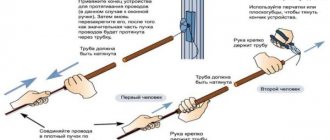Heat-shrinkable materials have a fairly high electrical resistance, which is why they are widely used in electrical engineering. These materials on the electrical goods market can be called new, but quite promising, due to the fact that they have excellent performance properties. The most widespread among them is heat-shrinkable tube. Under the influence of high temperature, it contracts, and it does so only in the transverse direction, that is, the diameter decreases, but the length does not change at all.
What kind of tubes are these? What properties and parameters do they have? What are they made of and how are they used correctly? We will try to answer all questions.
How are these tubes made?
For the production of heat-shrinkable parts, high or low pressure polyethylene is used. Polyethylene blanks must have the same geometric shape that the part will take in the future after thermal shrinkage. These blanks are modified, that is, they are exposed to chemical or radiation methods.
At the moment when the impact occurs, the process of detachment of hydrogen atoms from linear molecules begins in the polymer material. In this case, the molecules seem to be stitched together, and a completely different network structure is obtained, similar to rubber. A polymer material of such a structure additionally acquires such characteristic qualities as water resistance, elasticity and electrical insulating properties.
The polymer parts are then heated to a temperature equal to the melting point of the starting material. During heating, the polymers will become elastic and soft, but since they have undergone a modification procedure, they will not melt. Parts in such a hot form can be compressed or stretched, in general, given the required shape and size. After this, they are cooled to room temperature. The resulting polymer parts will have a shape memory effect, that is, under thermal influence (heating) they will take on their original geometric appearance.
Heat shrink for wires: product classification
The existing range of heat shrinks can be divided into several categories. Products are classified according to the following criteria:
- material of manufacture;
- geometric parameters (wall thickness and diameter);
- installation method;
- degree of shrinkage;
- form;
- special features, etc.
Heat shrinks are classified according to the following characteristics: material of manufacture; wall thickness and diameter, installation method, degree of shrinkage and shape
Heat-shrinkable tubes come in oval, round and flattened shapes. This parameter is selected taking into account the method of storage and transportation. Oval and flat products are tubes with a large diameter or thin walls. Round heat shrinks usually have thick walls. Among them there are sometimes tubes with a small diameter. Round heat shrinks have an adhesive layer.
Note! The performance qualities of insulation do not depend on its shape.
Classification of heat-shrinkable tubes by material type
Industrial enterprises produce a large number of materials of polymer origin with thermoplastic properties:
- polyvinyl chloride;
- polyester;
- fluorine rubber;
- polyethylene;
- polyvinylidene;
- polyethylene terephthalate;
- polymers containing polyolefin.
These raw materials are used to one degree or another in production during the production of heat shrinks.
In the process of manufacturing heat shrinks, raw materials such as polyvinyl chloride, polyester, fluorine rubber, polyethylene, polyvinylidene can be used
Polyolefin heat shrink – wire insulation consisting of cross-linked polyethylene. Before use, raw materials are subjected to radiation and chemical treatment. In addition, manufacturers include flame retardants in the material, as well as pigment components. This type of tube is considered the most common. The operating temperature range of polyolefin insulation is from -50 °C to +150 °C. Heat shrinkage easily tolerates contact with oxidizing agents and benzene, while fuels and lubricants destroy its structure during prolonged interaction.
Elastomer is a material based on synthetic rubber. Such tubes are not afraid of the influence of fuels and lubricants, as well as high temperatures (the upper limit is +170 ° C). The cost of such products is quite high.
Large-diameter heat-shrinkable tubes with thin and ultra-thin walls are made from materials such as polyester. At the same time, the resulting products, despite their small thickness, withstand mechanical loads and the effects of chemicals well.
Products made on the basis of silicone have flexibility, a high margin of safety and chemical inertness. The material contains no toxic components. Silicone insulation degrades when exposed to organic solvents.
Heat-shrinkable tubes made from silicone have high flexibility and a large margin of safety.
PTFE insulation has unique performance qualities. The manufacturing process of these products is quite complicated, so their cost is very high.
Insulating tubes made of thermoplastic polyvinyl chloride have a limited operating temperature range - from -20 °C to +80 °C.
Note! Thermoplastic polyvinyl chloride belongs to the category of combustible materials. During combustion, it releases harmful substances.
Types of products by installation method: heat shrink with and without an adhesive layer
Depending on the installation method, adhesive and non-adhesive products are distinguished. In heat shrinks that are installed using a glueless method, the tightness and strength of the connection completely depend on the tightness of the girth and pressure.
Heat-shrinkable tubes are divided into adhesive and non-adhesive products based on the installation method.
Heat shrinks for wires with glue provide stronger and more reliable fixation of connections. In these products, the inner surface is treated with a thermosetting adhesive composition. After the tube is installed, this substance ensures the tightness of the connection, and the heat shrink itself decreases in diameter by approximately three times.
In addition, there are products with additional longitudinal sealing, for example, Deray Duomelt 105. They look like a two-layer fusible tape coated with butyl rubber mastic. Tapes are used not only to seal cables, but also to reduce sound impact, as well as moisture protection.
How to use heat shrink tape? You will need to do the following:
- Fusible tape is used in conjunction with tubes from the same company.
- It is placed inside the wiring harness in the area where the heat shrink will be installed.
- When the tube is heated, the tape melts and fills the voids inside the bundle between the wires.
Heat shrinks for wires with an adhesive layer provide a more durable and airtight fixation of connections
Thanks to the molten tape, the wiring is reliably protected from moisture, condensation, dust and even air.
Features of heat shrink tubes with adhesive layer and solder
The category of adhesive products includes heat shrinks for wires with solder. These tubes have red rings. These pigmented areas are thickened heat shrinks with an adhesive layer. During the heating process, the red rings are compressed and securely fixed over the insulating sheath of the wire. This ensures the connection is protected from moisture penetration and also reduces the likelihood of rupture.
Related article:
Do-it-yourself electrical wiring in a wooden house. Step-by-step methodology for performing work Project development, selection of devices. Grounding device and RCD. Testing.
Between the rings there is solder with flux. To melt this material, a relatively low temperature effect is required - +120 ° C. The diameter of the heat shrink tube at different ends may vary. Manufacturers color-code products to make it easier for customers to select a conductor sleeve.
Heat shrink size chart for wires with solder:
| Cable cross-sectional area, mm² | Marking color | Bore diameter of the sleeve, mm |
| 0,3-0,5 | White | 1,5 |
| 0,5-1 | Red | 3 |
| 1-2,5 | Blue | 5 |
| 4 | Yellow | 6 |
Note! Before you heat shrink your solder wires, there are a few things to consider. If you use a lighter, the joint will become covered with soot, but the fixation will be very reliable. The construction hair dryer maintains aesthetics and secures the wires well. However, such a connection will not be able to withstand frequent bending.
Types of connectors for car wires with heat shrink
The filling of modern cars includes many electronic and electrical components. To ensure reliable and stable operation of the equipment, all connections must be strong and of high quality. This result can be achieved by using heat-shrinkable wire insulation. The products have unique properties, which is why 50% of the products produced by European manufacturers are used in the automotive industry.
By using heat-shrinkable insulation for wires, you can ensure reliable and stable operation of electrical equipment in your car.
This category of connecting elements includes adhesive and non-adhesive thermal tubes for wire insulation, as well as heat-shrinkable products:
- terminals;
- crimp sleeves;
- tips with glue tube;
- cable gloves;
- caps and ends;
- couplings.
All of them can be combined with thermo- and non-thermoplastic adhesives, as well as sealants.
Using heat-shrinkable wire connectors, you can protect the connections from mechanical stress and also provide good electrical insulation. In automobiles, such products are used to splice cables, leads and contacts, as well as some components of the electric motor, starter and generator. Heat shrinks have dielectric properties. A large size range allows the buyer to choose a product to protect any harness or wire in the car.
Wire insulation tubing can be used to seal connectors and connections. Due to the fact that manufacturers of modern cars have increased the service life of the engine, as well as the operating temperature in its compartment, rubber shaped parts, as well as the technology of spraying plastic over the mold, cannot eliminate the possibility of moisture getting to the joints. Heat shrinks for cables with a high compression ratio successfully cope with this task. In such products the amount of adhesive composition is usually increased.
Connectors for car wires with heat shrink protect joints from mechanical stress and provide excellent electrical insulation
There are also products on sale that are used to seal an entire bundle of wires. They are thermoplastic tubes combined with profiles and adhesives (sealants).
Note! If the tube will be placed in the engine compartment, it is advisable to use a product that is designed for operation in conditions of +135 °C or more. For wires in the trunk and interior of the car, such characteristics are not required.
What are heat-shrinkable products made from?
Thermal tubes, in addition to polyethylene, are also made from the following polymer materials:
- synthetic fluorinated rubber (fluorine rubber);
- polymers of the polyolefin group;
- polyvinyl chloride;
- polyvinylidene;
- polytetrafluoroethylene (Teflon);
- polyethylene terephthalate (polyester).
The operating temperature range of heat-shrinkable products also depends on the material (the range is huge: from -60 to +260 degrees).
Purpose of the product
Heat shrink tubing was originally used to insulate and protect wires, but it has many different uses. We'll talk about this a little later, but now we'll look at what goals can be achieved by using it in everyday life:
- Protection of any connections from moisture and water leaks. For example, you can connect two tubes or the junction of a pipe and a battery.
- Protection of connections from ultraviolet radiation, dirt, mechanical damage, corrosion. Since the tube does not allow moisture to pass through, rusting does not begin underneath it and corrosion does not occur.
- Surface protection from chemical reagents. The polymer is not afraid of contact with aggressive environments.
- Protecting surfaces or joints from deformation.
- Possibility of repairing cuts and other defects in cable insulation, insulation of wires and connections.
- Marking of wires in different colors.
The material is used wherever there are wires and cables - in car repairs, creating wiring, restoring household appliances and various electrical equipment. It is used when installing alarms or head units on cars, protecting connections of hoses with filters or other devices, used in plumbing, etc. A wide range of colors and diameters of heat-shrinkable tubes opens up great opportunities for repairing and insulating various surfaces.
Basic requirements and properties
Heat-shrinkable tube made of polymer materials has unique properties:
- High temperature resistance.
- Do not try to stretch it, it has a strength of at least 15 MPa.
- Resistance to acids, alkalis and other petroleum products.
- Withstands operating voltage up to 1000 V.
- Elastic.
- Easily deformed.
- Non-toxic.
- Does not ignite.
- It has the ability to hermetically compress objects with a complex relief surface, thereby providing mechanical protection and electrical insulation.
- Quite simple installation that does not require special knowledge and skills.
- Low cost.
Selecting Heat Shrink Tube
First of all, you need to decide on the operating conditions, then select HERE with the appropriate characteristics. For example, if contact with fuels and lubricants is possible, then the product must be oil and gasoline resistant. If it is necessary to ensure reliable insulation of the wires of a high-voltage cable, a tube is selected with protection at the connection point up to 1000 V.
Next comes an important point - selection of diameter HERE. In this case, the “-10+20” principle should be used. It is as follows: the minimum shrinkage should be no less than 10% of the original diameter and no more than 20% of the specified shrinkage parameter. A clear example of how this principle works is presented below.
An example of how to choose optimal shrinkage
When choosing the length, it should be taken into account that HERE gives longitudinal shrinkage. In low-quality products from the Land of the Rising Sun, it can be up to 20%. In branded kits, as a rule, longitudinal compression does not exceed 5-7%.
Application area
Heat-shrink tubing is most widely used as a substitute for traditional electrical tape during electrical installation work. It is used as the main component of heat-shrinkable cable sleeves. With its help, you can restore the damaged insulating layer of wires.
Heat-shrinkable tube is often used as corrosion protection; it is used to rubberize conveyor rollers and rollers.
The use of such a heat-shrinkable tube is not limited only to insulating properties; it can be used to mark the cores of a cable or wire, which facilitates further work and operation of the conductors. In this case, take tubes of different colors or with letter designations.
How to mark wires with heat-shrinkable tubing, see this video:
This polymer product is widely used in the chemical, oil refining and aviation industries, radio engineering, automotive industry and telecommunications. With the help of tubes they provide protection from external mechanical influences of fuel and hydraulic systems.
What is heat shrinking: its purpose, advantages and disadvantages
Heat-shrinkable tube (heat shrink) is a plastic product with insulating properties. For production, raw materials with thermoplasticity are used. When heated, such materials turn into almost liquid form. As they cool, they turn into a stretchy mass and harden.
When exposed to temperature, heat shrink tubing shrinks in size and takes the shape of the object it is placed on.
Thermoplastic types of plastic include:
- polyester;
- polyethylene;
- fluorine rubber, etc.
Thanks to these properties, it is possible to give any shape to a heated product, which will retain it after cooling, which has significantly expanded the scope of application of heat shrinks. The installation system is quite simple. To do this, you need to place the product on the section of wire or other piece of equipment that needs insulation, and then heat it.
When exposed to temperature, the size of the heat shrink tube decreases, it shrinks and takes the shape of the object it is placed on. All you have to do is wait until the product hardens. A hair dryer or burner is usually used for heating.
Note! An open flame may be used to heat the heat shrink tube unless prohibited by safety regulations.
A heat-shrinkable tube is a plastic product that, when heated, turns into a stretchy mass and hardens as it cools.
Scope of application and purpose of heat shrink tubes
The properties of heat shrinks such as elasticity, elongation ability, resistance to aggressive chemicals and high tensile strength have determined the scope of their application.
Heat shrinks are primarily used in the energy sector to perform the following tasks:
- insulation of wires, as well as live parts of electrical equipment;
- protection of areas where cable lines are connected;
- installation of lugs and couplings on wires;
- cable markings.
The main purpose of heat shrinkage is to insulate wires and live parts of electrical equipment
In addition, heat shrinks have found useful applications in industry. They are actively used in the chemical, automotive and other industries.
Using heat-resistant wire insulation you can:
- repair faulty machine parts;
- protect various structural elements from aggressive environmental influences, such as corrosion, as well as chemically active substances;
- protect parts from exposure to high temperatures;
- treat plumbing tools, such as wrenches or screwdrivers, to ensure their safe operation (creating an insulating coating);
- protect from abrasion areas that are constantly exposed to mechanical loads (areas where the structural mechanisms and its components come into contact).
Heat shrink tube on a car spring to protect it from corrosion
Comparative characteristics of heat-shrinkable tape and tube
Heat shrinking, like any other type of insulating material, has advantages and disadvantages, which determine how convenient and useful the use of the product will be in a certain situation. To prevent shorts and fires, electrical tape or conduit is usually used where the wires are connected. It is possible to determine which product option is better only by comparing their pros and cons.
Helpful advice! If heat shrink tubing is used as tool insulation, it is better to use products with a corrugated or ribbed surface for these purposes. They will not only improve the ergonomics of the handles, but also provide a more secure grip.
Comparative characteristics of electrical tape and heat-shrinkable tube:
| Insulating tape | A tube |
| It takes about 2-5 minutes to isolate one connection. (depends on how convenient access to the joint is) | Installation of the product does not take much time, within 5-10 seconds. you can get a reliable and durable connection |
| Does not affect strength characteristics | After cooling, the polymer becomes more dense, making the joint area strong and resistant to mechanical stress. |
| The degree of adherence of the insulation to the wire can be considered relative, the result depends on the skills of the electrician (the material moves to the side) | A completely sealed connection is created that can last for a long time |
| Affordable price | If only one connection is intended to be isolated, then the cost of purchasing the product is not justified |
| It is not recommended to subject the material to stress, since the degree of protection is low | The material retains its insulating properties for a long time even when exposed to external factors |
| There is a risk that after installing the product, the wire will not fit into the corrugation or box and will not be able to pass through the hole in the wall | The junction area with the insulation is very thin and neat |
| To isolate the junction area between the wires, you only need a knife to cut a strip of the required length | Installation of the product is impossible without a special tool (hair dryer, matches or lighter) |
| Can be used to insulate wires and parts of any thickness | Limited selection of heat shrink sizes for wires |
Varieties
Types of heat-shrinkable tubes depend on their design and installation principle.
Adhesive
Adhesive heat shrink for wires has become widespread. A distinctive feature of their design is the internal adhesive layer, due to which a more reliable seal is obtained at the moment of thermal exposure. Thanks to the glue, the tube tightens the junction of the wires, which almost perfectly protects against moisture. The shrinkage coefficient of such tubes is more than 300%.
Thick-walled
Due to their low cost and ease of installation, thick-walled tubes have also become widespread. They are made from polyolefins. These products come in two types, some of them are capable of suppressing combustion, others do not have this ability. In the first option, non-flammable substances are used for manufacturing and, if no open fire hits such a tube during the combustion process, it gradually extinguishes on its own. Such tubes have found application in industries with a high explosion hazard and in the military industry.
Special
These tubes are used when additional properties are required. For example, products that can withstand operating voltages above 1000 V are used in high-voltage electrical networks. They produce fluorescent tubes; during the daytime they accumulate light and emit it at night. This option is widely used in low-light areas. There are corrugated tubes used to cover the handles of power tools.
Types of heat shrinkage
Here are the main types of heat-shrinkable tubes widely used in everyday life and industry (from the KVT company), their sizes and characteristics:
Heat-shrinkable tube TUTng 2k1 Transparent tube KST 2k1 Colored tubes HERE 2k1 Yellow-green TUTng w-z
Yellow-green heat-shrinkable tubes TUTng z-z
Thick-walled and high-voltage heat shrink grades:
Thick-walled TST 3k1 Anti-tracking TST-A 3k1 Thick-walled non-flammable TT-S ng Heat-shrinkable tape TLK-10 Tube for 10kv tires TTSH-10 Tube for 35kv tires TTSH-35
Thick-walled TST 3k1
Heat shrinks of special design:
Repair cuffsReinforced cuffsCable capsHeat shrink 6k1CasingWith adhesive layer TTKMedium-wall STTK
Technical characteristics and parameters
One of the parameters of heat-shrinkable products is their resistance to various operating environments. Based on this characteristic, tubes are of the following types:
- heat resistant;
- light stabilized;
- oil resistant;
- petrol resistant;
- chemically resistant.
The shape of the tubes is produced round, oval and flattened. This has practically nothing to do with installation, everything is purely for ease of transportation and storage. Oval and flattened products have thin walls and are transported and marketed in coils. Thick-walled and adhesive tubes are round in shape; they are supplied cut and are not rolled into coils to avoid kinks.
An important parameter is the shrinkage coefficient; this value indicates how many times heat shrink for wires can reduce its size. The higher this number, the better, it varies from 1:2 to 1:6. But accordingly, products with a high shrinkage coefficient are more expensive.
The main parameter of heat-shrinkable elements is the diameter before and after shrinkage. It is recommended to choose tubes whose diameter after shrinkage is slightly smaller than the diameter of the wire being crimped.
The characteristics of heat shrink are described in this video:
Characteristics of thin-walled HERE
I would like to say separately about some of the features of thin-walled heat-shrinkable tubes, because they often differ from tubes of other categories.
Namely, thin-walled TUTs have the following characteristics:
- How to install electrical wiring in a wooden house
Urgent entry into a construction SRO
- Gasoline power plants
- Self-extinguishing;
- When burning, no harmful halogens are released;
- Increased heat resistance;
- Reduced heat shrink temperature;
- Increased resistance to ultraviolet rays;
- Increased resistance to mechanical and chemical influences.
Necessary tool
In order for heat shrink to work as intended, it must first be heated. This means that any heating sources will be needed. It can be:
- industrial dryer;
- heat gun;
- a gas burner running on propane-butane (the main thing is to set it so that the flame is soft and yellow);
- ordinary household hair dryer;
- lighter or matches.
The main thing is to create a stream of hot air or an open flame. In some emergency cases, when nothing is at hand, they even lower the tube into boiling water.
The best option would be an industrial hair dryer or a heat gun, because these devices are safe and easy to use, and you can use them to regulate the temperature. The kit also includes additional attachments that facilitate the installation process in hard-to-reach places. But such a tool is not cheap; buying it just to insulate the wire connections in the junction box is not economically profitable. It will be good if you can rent or borrow it.
Differences in thickness
The size of the heat shrink for the wires affects the quality of the insulation. Here, first of all, we are talking about the thickness of the tube walls. On sale you can find the following options:
- thick-walled tubes;
- thin-walled products;
- Models are medium in thickness.
- Wire connector: instructions on how to make the connection yourself. Instructions for use of clamp, clamp and lugs
- Wire lugs: instructions on how to select and install a lug. Overview of all types, photos, instructions, diagrams
- Pvs wire: full decoding, technical characteristics, types, where to buy and how to choose a manufacturer
Shrinkage
Installing a tube with your own hands at the junction of the wires is quite simple; this is exactly the case when special skills and the invitation of a professional are not required.
The most important thing is not to forget to put it on one of the conductors before they are connected into a common electrical unit.
And then follow a certain sequence:
- The tube must first be heated to half the required temperature. In the case of thin-walled products, this point can be neglected, but for a tube with thick walls and a large diameter, it must be completed.
- Pull the tube over the connection and begin heating. Try not to exceed the temperature specified by the manufacturer. If you use a heat gun, this is easy to do by setting it to the desired degrees. Please note that if the required temperature is exceeded, the material may overheat, and the tube may melt or curl, or shrinkage may occur in waves. Heat from the middle of the product being attached.
- When the central part lies firmly on the joint surface, begin to alternately move the heat source in both directions. Constantly and evenly move the flame or air flow from the middle to the edges to avoid overheating in any one place.
- Correct shrinkage is smooth and there should be no bulges or bumps on it. If you are using a glue tube, pay attention to the fact that after shrinking is completed, glue should appear at the edges. Allow the installed heat shrink to cool completely.
How to use heat shrink, watch the following videos:
basic information
Objectively speaking, HERE is a replacement for the good old electrical tape. One disadvantage of this alternative is that it is almost impossible to use on surfaces of different thicknesses.
In addition to the main property of heat shrinkage, the tubes also have different colors. Among them you often find red, blue, green, and yellow. There are also striped ones.
Color is needed not only for beauty, but also for marking wires of different types and purposes. And this greatly simplifies working with them in case of breakdown.
It is necessary to tell in more detail about the marking of wires. Basically, such markings are used in three-phase electrical circuits, where red, yellow and green colors are used. Each color corresponds to its own phase. Grounding is usually marked HERE with yellow and green stripes.
Useful tips
- If you are using a thick-walled tube, then first degrease the surface that it will be compressed. To do this, soak a cloth in a solvent that does not contain fat and wipe.
- It is very important to choose the optimal temperature for shrinkage. A good manufacturer will always indicate this number on the tube itself or on the overall packaging (ask the seller). If such data is not available, focus on a temperature of 120 to 150 degrees.
- Before placing the tube on metal surfaces, they must be cleared of burrs using sandpaper.
- If you are placing the tube on large-section steel or copper conductors, preheat them. These materials have high thermal conductivity, due to which, at the time of shrinkage, heat can be removed from the heating site, which will affect the quality.
- When you cut the tube, do it carefully so that the edges are smooth and without burrs. Otherwise, during shrinkage, the tube may burst, shrink unevenly, or go in waves.
As you can see, polymer tubes as an insulating material are very effective, reliable and safe. In principle, everyone can afford to use them. The price range is very wide and depends on the manufacturer, size, color, presence of glue and additional parameters. The quality will correspond to the price - either inexpensive Chinese pipes, or 160 euros per 1 m from a world-famous German manufacturer.
Size range of heat shrink tubes
The product range (in our case, size range) depends on manufacturers and suppliers. You can get complete information on this issue on the official websites of manufacturers or their dealers. As an example, we provide information on the size range HERE®.
Table: available sizes from the manufacturer HERE®
Heat shrinks with adhesive sublayer
The same adhesive sublayer, which was partially mentioned above. Basically, it is used to isolate and support those places of electrical mechanisms that are the least stable from a mechanical point of view. In general, these are the same tubes, equipped with heat shrink, with one exception.
They are supplied with a special tape that provides an adhesive underlayer. It straightens out during installation and ensures high-quality adhesion of the tube to the working surface.
Additional tasks to be solved
Thermally shrinkable tubes are used not only for installing wires. This is the ability to create a layer of reliable insulation on wires or tools. For example, in switchboards or electrical appliances you have to unscrew screws with a screwdriver with the risk of touching adjacent live parts. To avoid this, put a heat-shrinkable tube on the tip of the screwdriver of such length that only its tip remains exposed. After heating, it will cover the sting so tightly that the resulting layer can only be removed by cutting it with a knife.
Making a screwdriver with an insulated tip Making a screwdriver with an insulated tip
In order for the tube to shrink optimally, its entire surface must be heated evenly. You can find tubes of different diameters on sale. Large diameter tubes are made folded and flat to occupy less volume. These shrink fittings are good for upgrading metal hand tools. For example, using large diameter tubing, you can renew or insulate the handles of pliers or pliers, wrenches, etc.
Since the range of diameters and colors is very diverse, you can always make a good choice of tube. And if necessary, the thickness of the insulation layer can be increased by a sequential process, putting on and shrinking several tubes. To obtain the most durable attachment of the film to the handle, preventing it from slipping under significant forces, it is best to use tubes with a layer of hot-melt adhesive. Another use for a tube with a layer of hot melt adhesive is to create an anti-corrosion coating on hoses and pipes.
Applying insulation to the handle of a wrench
Applying insulation to the handle of a wrench
Applying insulation to the handle of a wrench
Insulating a small electronic board with heat shrink sleeve Insulating a small electronic board with heat shrink sleeve Insulating a small electronic board with heat shrink sleeve
Which heat shrink tubes to use in different situations
Let's highlight a few main life cases when you can use them:
- 25 mm. suitable for situations where you need to isolate USB boards, modems, etc.
- 6 mm is suitable for power wires.
- 5 mm is the most used. You can safely buy it with a large reserve.
- 4 mm is not used so often, but you can’t do without it either.
- 3 mm is considered very useful, because it can be used to connect many wires.
- 2 mm are considered indispensable during electrical work in the house.
Heat shrink tube
Tubes from 2 to 6 mm should always be purchased with a reserve. They don’t have such a high price, but they can help you out in many life situations.
